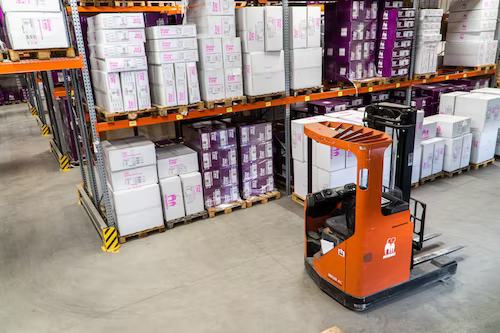
E-commerce companies put a lot of effort into making sure their customers have a great experience while purchasing from their stores. They approve images and tweak their store’s navigation, and write customized emails, all with the goal of leaving your customers happy. But what about shipping and product fulfillment?
Shipping is a crucial aspect of any company and the reputation of a company depends on it. When a customer finally experiences a product in person, it can also represent a major expense in a business, depending on your shipping strategy and outsourcing.
What are Shipping and Fulfillment?
In simpler terms, shipping and fulfillment solutions ideally involve receiving products, processing them, and then sending orders to clients. When a customer places an order, the process begins and concludes when they receive their order. But order fulfillment can also mean handling returns if a customer decides to send something back.
The following activities can summarize the whole process:
- Receiving inventory shipments
- Inventory storage
- Order processing
- Shipping
- Returns processing
Shipping and order fulfillment can be an expensive and complex process. Some companies handle order fulfillment in-house, while others outsource the process to a third-party logistics company. However, having the right strategy can help you immensely crucial.
Shipping and fulfillment strategies
Understanding the conventional fulfillment strategies is the first step in developing a successful shipping strategy. This helps you avoid unnecessary costs mainly caused by misunderstandings with shipping providers. Some of the most common fulfillment strategies employed by e-commerce businesses are:
- Self-Fulfillment
Self-fulfillment is when you independently store, manage, and deliver products to customers. This is the method that many startups often use at the beginning of their business launch.
- 3PL (Third Party Logistics)
3PL or Third-party logistics is a third-party eCommerce fulfillment where you use an outsourced provider of logistics services to store your inventory for you and fulfill orders. But here, they do not own your products.
- Drop shipping
Drop shipping is a fulfillment method where you don’t store inventory onsite. Customers’ orders will be fulfilled straight from the manufacturer or wholesaler.
1. Speed
Shipping speed is one of the most crucial factors to consider while sustaining and developing a fulfillment service. Certain fulfillment businesses require lead time, which could be a day or a week, to fill orders. In any case, the fulfillment company’s lead time leaves your customers waiting, not only for the time it takes to ship the goods but also for that lead time.
According to a studies online shoppers expect three-day delivery. Speedy delivery has changed from a unique feature to delight customers to a basic expectation. Failure to meet this expectation can leave customers dissatisfied and can reduce the probability that they return to your store. So as a shipping and fulfillment business, that aspect should be taken care of.
2. Strategy and Partners
It’s crucial to have a shipping strategy that addresses the why and the how, regardless of how established your online venture is.
As a successful business, you should always look to increase conversions, expand your market, or tweak an existing strategy to decrease your overall costs.
Additionally, you can identify your goals in advance, no matter what they are. Then, create benchmarks and build a team to help you implement them. You’ll need to get sign-off and support at all levels of your business.
It’s also very likely that you’ll need to partner with couriers to handle your deliveries. Before you start your search, it’s essential to know your exact requirements and priorities and the services,
Choose your couriers based on their delivery speed, range, costs, and specializations.
3. Inventory Management and Warehousing
When you’re in the shipping business, maintaining inventory becomes highly crucial. It’s always a boon that e-commerce websites outsource their list and allow other ventures to come in and fill the gap.
To mitigate this issue, choose a fulfillment business that offers practice management and control solutions for your inventory. While you can manage your inventory levels using a spreadsheet or QuickBooks, it would be much better if a specific fulfillment firm-controlled inventory automatically. Afterward, you can log into the software to check your inventory levels and inform fulfillment firms of incoming shipments.
A warehouse is a given for every fulfillment business, and it comes with the job. However, updating your warehouse services regularly is critical.
4. Free Shipping
It is widely known that giving your consumers free delivery is one of the best methods to prevent shopping cart abandonment. However, shipping is never free. There is always a cost. To make free delivery work, you can incorporate a few alternatives.
- Raise the prices of the goods to cover delivery expenses
- Pay the total freight cost using your profit margins
- Increase the prices of products slightly to cover partial costs of shipping
- Offer a discount code to specific customers for free shipping.
You can also try offering free shipping on a minimum order amount. This strategy can help offset the costs of shipping by helping to increase your average order size, but
5. Labelling and User Interface
The shipping supply chain generally speaks a language that uses barcodes. Almost every product you purchase online from any retailer has a barcode somewhere. This automatically allows computer systems to maintain inventory levels, among other handy functions. Your labeling procedures must be secure and provide the utmost security.
However, fulfillment companies will print and apply labels at a marginal extra cost. This can save a lot of inventory that would otherwise not be able to leave the warehouse. You can communicate with your chosen fulfillment company electronically. At the very least, you will need to send orders by email. On the other extreme, you can integrate fulfillment services within your own company to remove third party services.
Conclusion
Shipping and order fulfilment is a crucial component of any company’s infrastructure if they sell physical goods. Once they reach a certain level of sales, they outsource fulfillment so they can focus on other matters, like selling more. However, if you want to make sure your inventory is in trustworthy hands, hire the right shipping and order fulfillment venture.



Leave a Reply
Your email address will not be published. Required fields are marked *